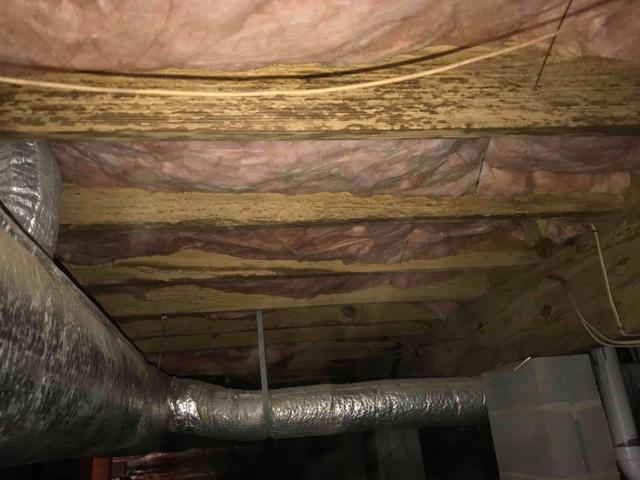
Mold and Mildew
Mold and mildew grow on the floor's joists and paper backing of insulation in the crawl space. The microbial growth is a result of high relative humidity, coupled with warm temperatures and an organic food source.
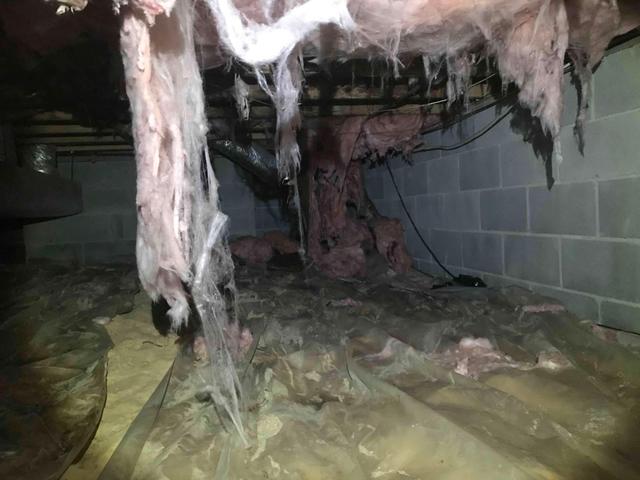
Damaged Insulation
As moisture is absorbed by the fiberglass insulation, the fibers are damaged. These fibers begin to pull apart or delaminate, separating from one another and "dripping" from the floor. The moisture also adds weight to the insulation causing it to sag and fall.
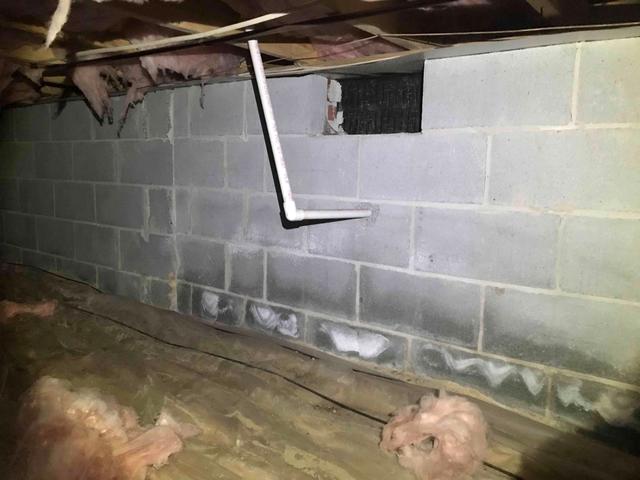
Moisture Entering Crawl Space
Concrete blocks are porous and moisture to seep through them. This moisture pulls minerals in the block to its surface resulting in the white powdery spots on the wall, called efflorescence. Moisture can also find its way in through cracks in the wall, penetrations through the foundation wall to the outside, and under the walls.
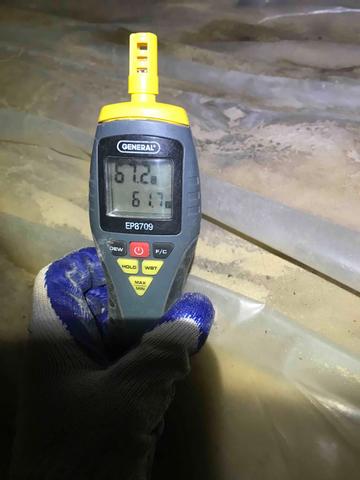
High Relative Humidity
Relative Humidity (RH) is how much moisture the air can hold at its current temperature. At about 60% RH, microbial growth can begin. When RH reaches 100%, we have rain. Controlling RH in the crawl space is how we protect it from future mold growth and damage.
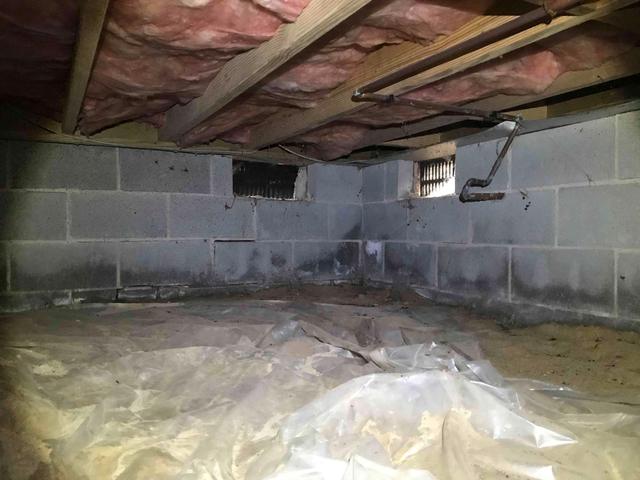
Vapor Barrier
6-mil vapor barriers are the standard for a new crawl space or to sell a home. However, they are not effective in protecting the crawl space from the earth's moisture. 6-mils are fragile, they rip easily, and typically have a slick coating that does not allow seams to be taped and sealed. They cannot be wrapped or adhered to walls and piers because they will rip right off the walls and are installed using U shaped stakes creating more holes in the system and more weak points.
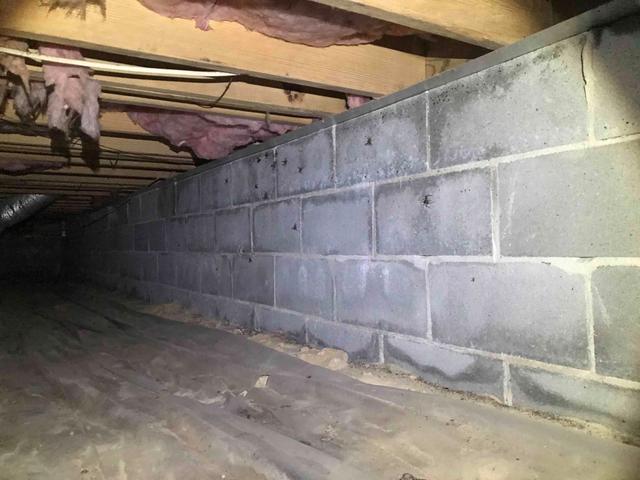
Pests
Dark, damp crawl spaces are the ideal environment for pests, rodents, snakes, and other critters. Mice, rats, and snakes like to nest in the fiberglass insulation. They like it down here because there is often some source of water from the ground or condensation, the collection of critters means that they can find food, and there are no humans to disturb them.


